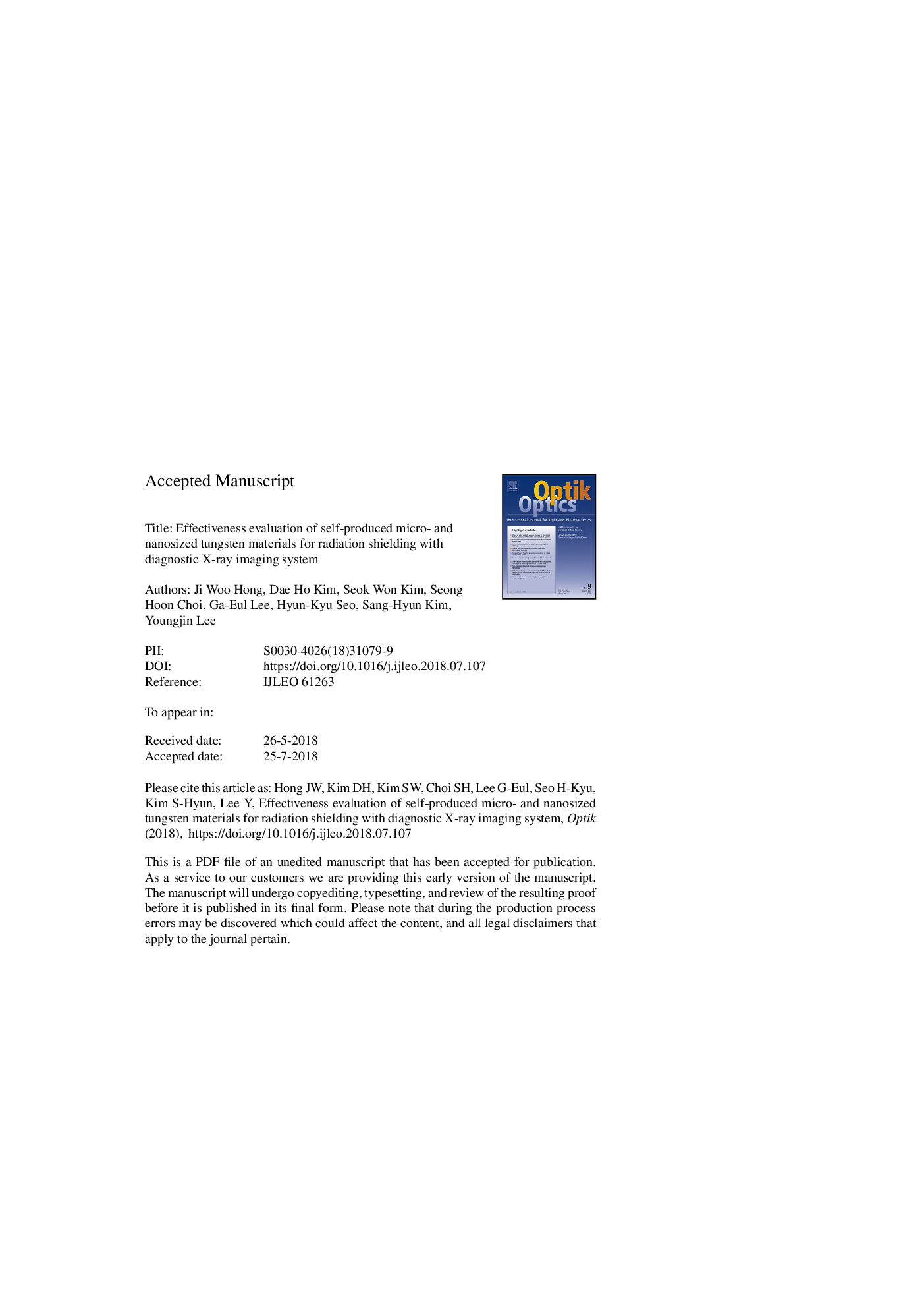| Article ID | Journal | Published Year | Pages | File Type |
|---|---|---|---|---|
| 7223011 | Optik - International Journal for Light and Electron Optics | 2018 | 10 Pages |
Abstract
The purpose of this study is to compare and evaluate the radiation shielding efficiency of micro- and nanosized tungsten materials using powder type with 1-mm thick with respect to the X-ray exposure condition. We used an X-ray imaging system, and micro- and nanosized tungsten materials were manufactured and used. The exposure conditions were tube voltage of 41-140âkVp at fixed tube current of 10 mAs to evaluate radiation dose; we measured each transmissivity using an acrylic phantom. Also, a scanning electron microscope and X-ray diffraction spectroscopy were used for evaluation of quantitative microstructural analysis and the amount of crystalline material, respectively. The results of X-ray transmissivity measurements show that the nanosized tungsten shielding has much lower transmissivity than the microsized tungsten shielding from 41 to 100âkVp. At tube voltage of 100âkVp or more, there was almost no difference in the transmissivity of the two types of shielding. In conclusion, our results demonstrate that shielding effectiveness using nanosized tungsten material is better than that of microsized tungsten material at relatively low tube voltage of 41-100 kVp.
Keywords
Related Topics
Physical Sciences and Engineering
Engineering
Engineering (General)
Authors
Ji Woo Hong, Dae Ho Kim, Seok Won Kim, Seong Hoon Choi, Ga-Eul Lee, Hyun-Kyu Seo, Sang-Hyun Kim, Youngjin Lee,
